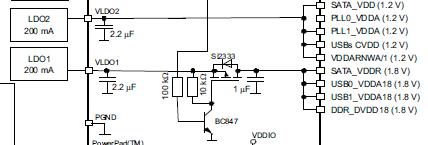I am now designing a board that uses a TMS320C6748. I'm wondering if you could answer a question about the processor's USB controller. I am trying to understand the purpose of USB_VBUS and USB0_DRVVBUS. I found this datasheet focusing on the USB controller:
http://focus.ti.com/lit/ug/sprufm9h/sprufm9h.pdf
Sections 2.5 and 2.7 discuss this in detail, but I am still confused about what this pin does. I understand that a host needs to source 0.5A and a device can optionally be powered by this. What I don't understand is the USB controller's role in this. I get that the USB_DRVVBUS pin tells my power supply circuit whether it ought to source power, i.e. whether the DSP is a host. But what is the purpose of USB_VBUS pin? I appreciate any help you can provide.
Thanks again!
Paul


